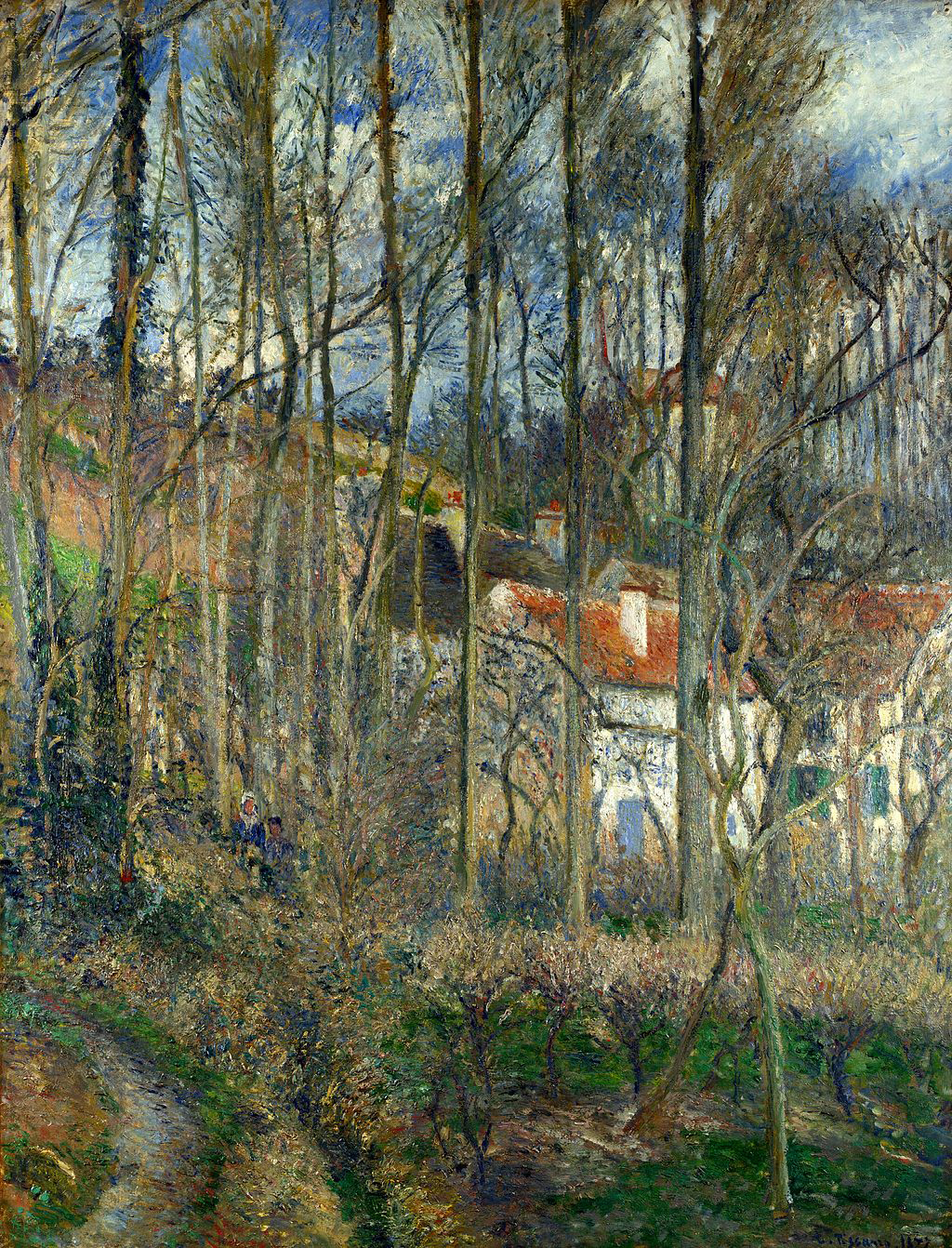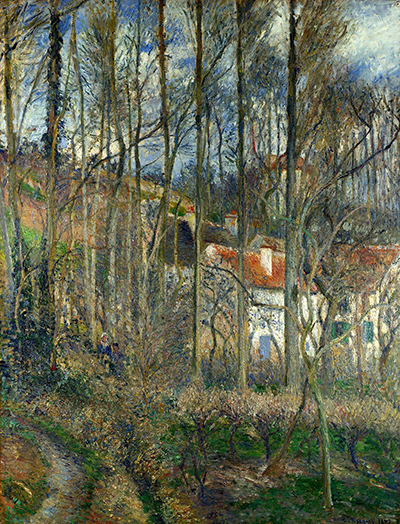Camille Pissarro was a well-known French impressionist, and his works have graced the art world over the years. The Côte des Boeufs at L'Hermitage (The Coast of the Oxen at L'Hermitage) was done in 1877, at the height of the Impressionist revolution, which gave the painting the much-needed publicity.
The painting was inspired by The Peasant Rurality; a landscaped theme with undergrowth backgrounds which were light and panoramic. The buildings in the painting are surrounded by trees densely spaced, which was his signature style throughout the 1870s. With such background and approach, most of the paintings done in this era were bigger than usual, which makes Côte des Boeufs at L'Hermitage one of the biggest paintings done by Pissarro.
Côte des Boeufs at L'Hermitage Explained
The painting was done in 1877 from oil and canvas. The original measurements were 114.9cm wide and 87.6cm high. The painting shows houses in the background in hilly terrain with trees in the foreground. The clear skies and wilting vegetation denotes a season in the winter. The attention to details, precision on colouring and the angle of painting make the painting more real.
The same model and atmosphere are replicated throughout Pissarro's paintings in the late 1870s as impressionism took root. Some of his paintings done in the era include The Red Roofs, a Corner Village, Winter Effect done in the same year. The tonal impression might be different but the style is the same. Paul Cezanne, Pissarro’s colleague, also used the same style and environment to paint The Orchard, Cote Saint-Denis. The painting was exhibited the same year at the Paris Third Impression Exhibition and elicited positive feedback from both friends and critics. Presently, the original painting is housed by the National Gallery in London, but the replicas are sold by art shops all over the world.
Camille Pissarro and the Impressionist Era
Pissarro learnt his trade from Gustave Courbet, Fritz Melbye, and J.P. Camille Corot. With time, he interacted with Georges Seurat and Pierre Cezanne. Although he later abandoned impressionism, which he termed as "too artificial", he shaped the lives of young painters like Paul Cezanne, Vincent van Gogh and Paul Gauguin.
Some of the popular works done around the same time as The Côte des Boeufs at L'Hermitage using the same technique include On Orchard in Pontoise in Winter, Landscape with a Man digging, The Les Mathurins Pontoise, Route du Fond in Hermitage Pontoise, The Climbing Path L’Hermitage and the Garden at Pontoise; all of which were done in 1877. Beside this theme, Pissarro was also good with portraits. He painted his own portrait (1873), The Portraits of Eugene Murer (1878), Eugenie Estruc (1876), Pere Papeille (1874) and Paul Cezanne (1874).





